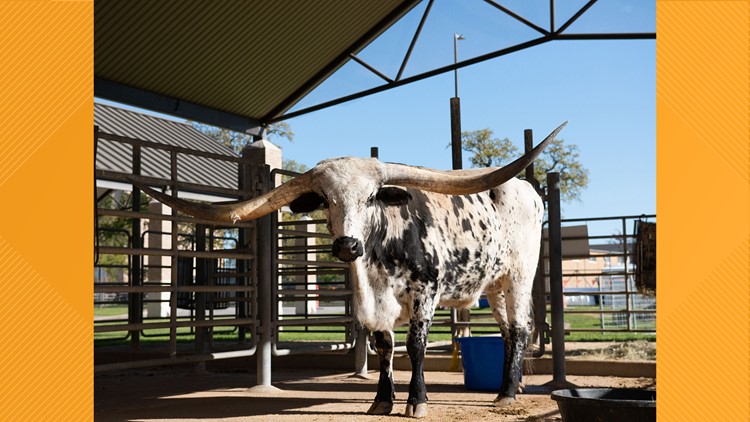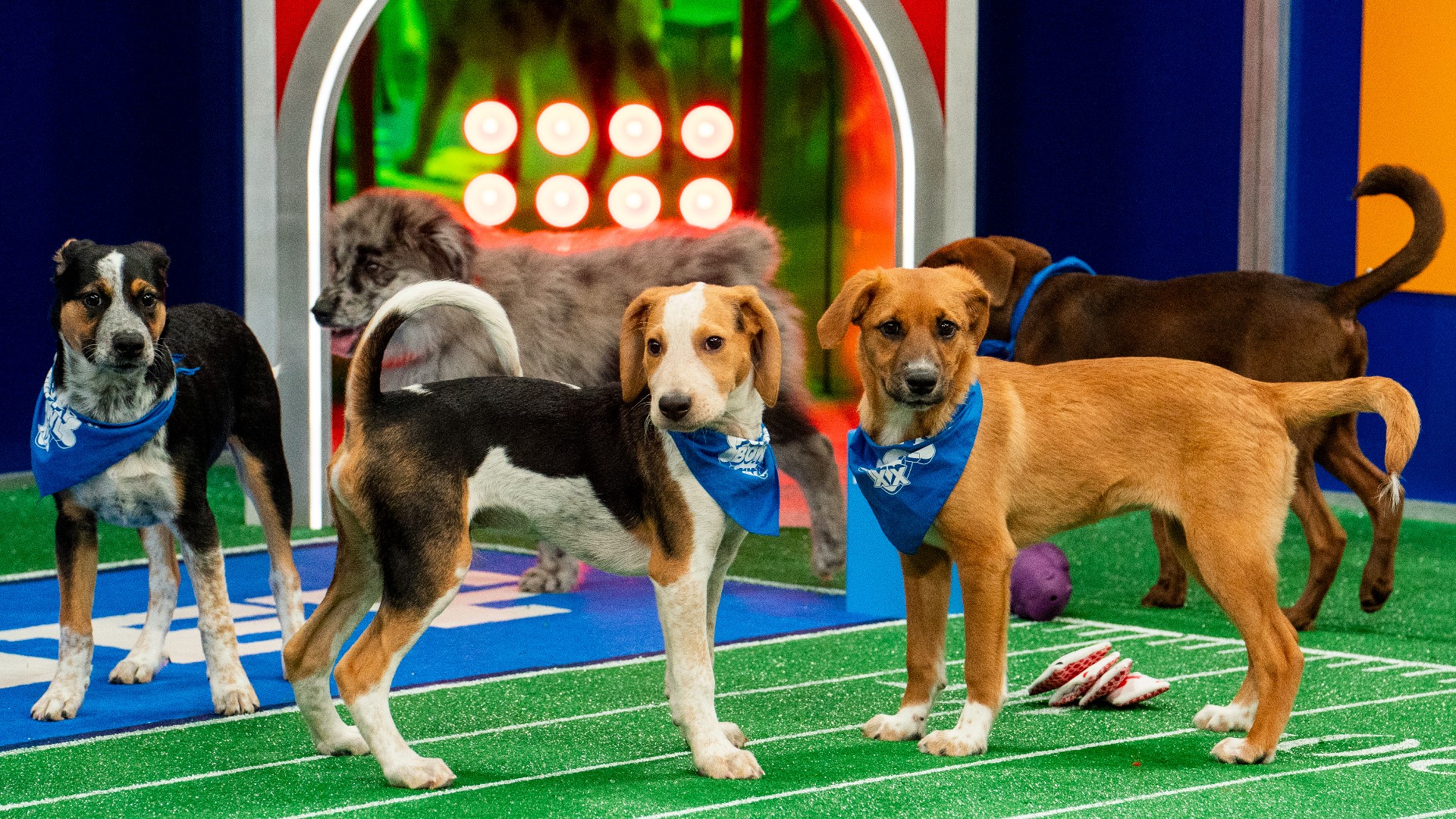COLLEGE STATION, Texas — Feuds between Texas Longhorns and Texas A&M Aggies are among the most recognized university rivalries across the U.S., dating back over 100 years.
For Aggies, a signature phrase in the university's history is "saw 'em off", a reference to the act of sawing a longhorn's horns off, which sometimes must be done to the cattle that's become a staple of the Lone Star state.
However, Texas A&M veterinarians found a way to heal a longhorn suffering from a fractured skull due to extremely heavy and nearly record-breaking horns. Their solution? Not sawing 'em off.
Dante, a longhorn from the Austin Zoo, sought Aggie help when he suffered a skull fracture from his extremely heavy and nearly record-breaking horns. While the other two longhorns at the Austin Zoo--Mack and Chance--have horns of roughly average length, about 6 feet, Dante's horn span reaches a massive 93 inches from tip to tip.
In fact, that horn span is only 10 inches shorter than the world record.
While the original plan to get Dante on the road to recovery was to amputate both of his horns, the veterinary team was able to devise a strategy to heal the fracture and not require his horns be cut off.
Using a procedure involving orthopedic implants suggested by Dr. Shannon Reed, a clinical associate professor at the Texas A&M School of Veterinary Medicine and Biomedical Sciences, to take the nearly 20 pounds of weight the right horn was putting on Dante's skull, the team was able to devise a plan to get the Austin Zoo longhorn on the road to recovery.
The procedure ended up being a success, and Dante spent about three months at the Texas A&M Large Animal Teaching Hospital (LATH) healing, receiving care, and being monitored for any potential complications by staff. Additionally, the veterinary surgeons and 28 veterinary students got the chance to care for Dante during his recovery period.
According to Dr. Reed, she is hopeful that the Austin Zoo longhorn will not experience pain from his large horns again because according to the associate professor, "when bone heals, it heals stronger than it was when it broke."
While the question of how Dante became injured may not ever be known, Patti Clark, the executive director of the Austin Zoo, said that he was ecstatic to be home once he had returned to the zoo.
"When he was unloaded, he stepped out of the trailer and went straight over to the fence to see Mack," said Clark in a report on Texas A&M Today. "Within five minutes he started running around like a kid, kicking up his heels. He was so happy to be home."
Dr. Jennifer Schleining, a clinical professor and the interim head of the Department of Large Animal Clinical Sciences, also praised the people that made the breakthrough procedure possible.
“Dante’s case highlights the possibilities that exist when unique circumstances meet a dedicated team of highly trained veterinarians and technicians who are willing to look beyond the status quo,” she said in a report on Texas A&M Today. “His success was possible because of the efforts of a collaborative team in diagnostic imaging, anesthesia, surgery, farriery, internal medicine and ICU, as well as multiple students who provided the ultra-important TLC that contributed to his recovery.”
Click here to read the full article on Texas A&M Today.



